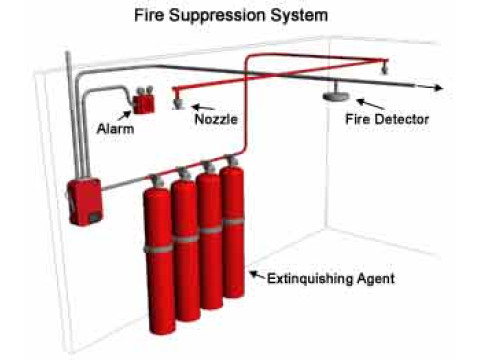Automatic Fire Suppression Systems: Ensuring Comprehensive Fire Safety
At safsale.com, we offer detailed insights into automatic fire suppression systems, covering various types like water, foam, gas, and powder-based solutions. These systems provide unparalleled efficiency in fire control and are essential for modern safety infrastructure.
What Are Automatic Fire Suppression Systems?
Automatic fire suppression systems are integrated safety setups designed to detect, localize, and extinguish fires without human intervention. These systems are tailored to different environments and risks, ensuring optimal protection.
Types of Automatic Fire Suppression Systems
1. Water-Based Systems
- Sprinkler Systems: Activate upon detecting heat; ideal for indoor use.
- Drencher Systems: Provide widespread coverage, effective for high-risk zones like stairwells and cable shafts.
2. Foam-Based Systems
- Commonly used in fuel storage areas, warehouses, and manufacturing units.
- Foam Variants: Low, medium, and high expansion foams, tailored to different applications.
3. Gas-Based Systems
- Suitable for spaces with sensitive equipment, like server rooms or museums.
- Gases Used: Carbon dioxide, halocarbons, nitrogen, and inert gases.
4. Powder-Based Systems
- Effective for Classes A, B, and C fires.
- Fill enclosed spaces with fine powder to suppress flames and reduce oxygen levels.
5. Aerosol-Based Systems
- Target specific materials like wood dust, fibers, or volatile chemicals.
- Ideal for industrial environments prone to localized fires.
Key Features of Fire Suppression Systems
- Automated Detection: Includes smoke and heat sensors.
- Efficient Response: Systems activate immediately upon detecting fire hazards.
- Versatility: Options for modular (self-contained) or centralized setups.
- Compatibility: Can integrate with alarm and evacuation systems for complete safety solutions.
Advantages of Automatic Fire Suppression Systems
- Safety: Reduces risks for occupants by swiftly controlling fires.
- Damage Minimization: Tailored suppression agents prevent unnecessary damage to assets.
- Reliability: Continuous monitoring ensures readiness during emergencies.
Maintenance and Compliance
- Routine Inspections: Check system integrity and replace consumables as needed.
- Periodic Testing: Ensure activation mechanisms are functional.
- Regulatory Adherence: Comply with local fire safety standards and guidelines.
Elevate Fire Safety with Automated Solutions
Automatic fire suppression systems are critical for safeguarding lives and assets. By understanding their types and applications, you can choose the best system to meet your specific safety requirements.
Visit safsale.com to explore advanced fire suppression technologies tailored to your needs.

